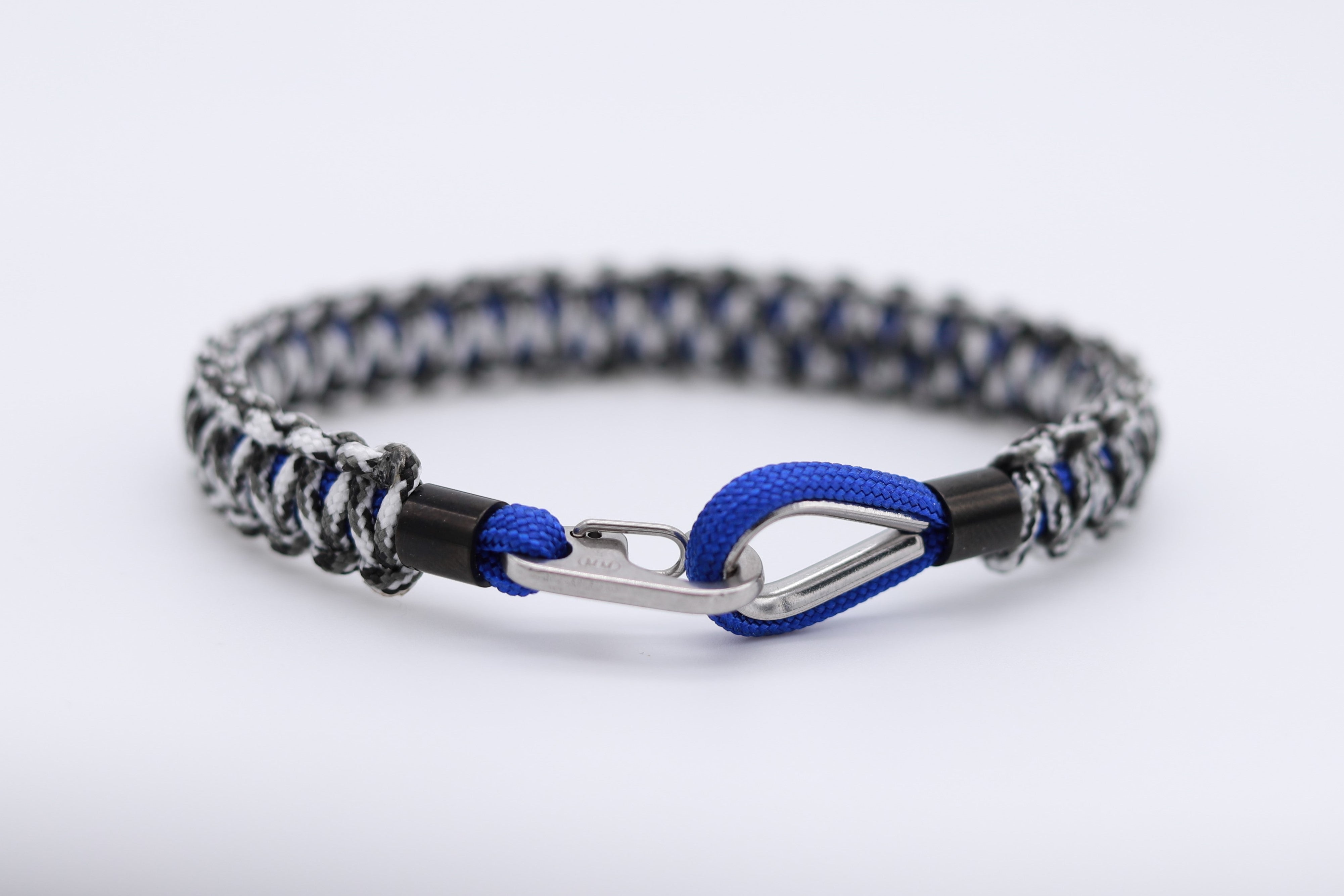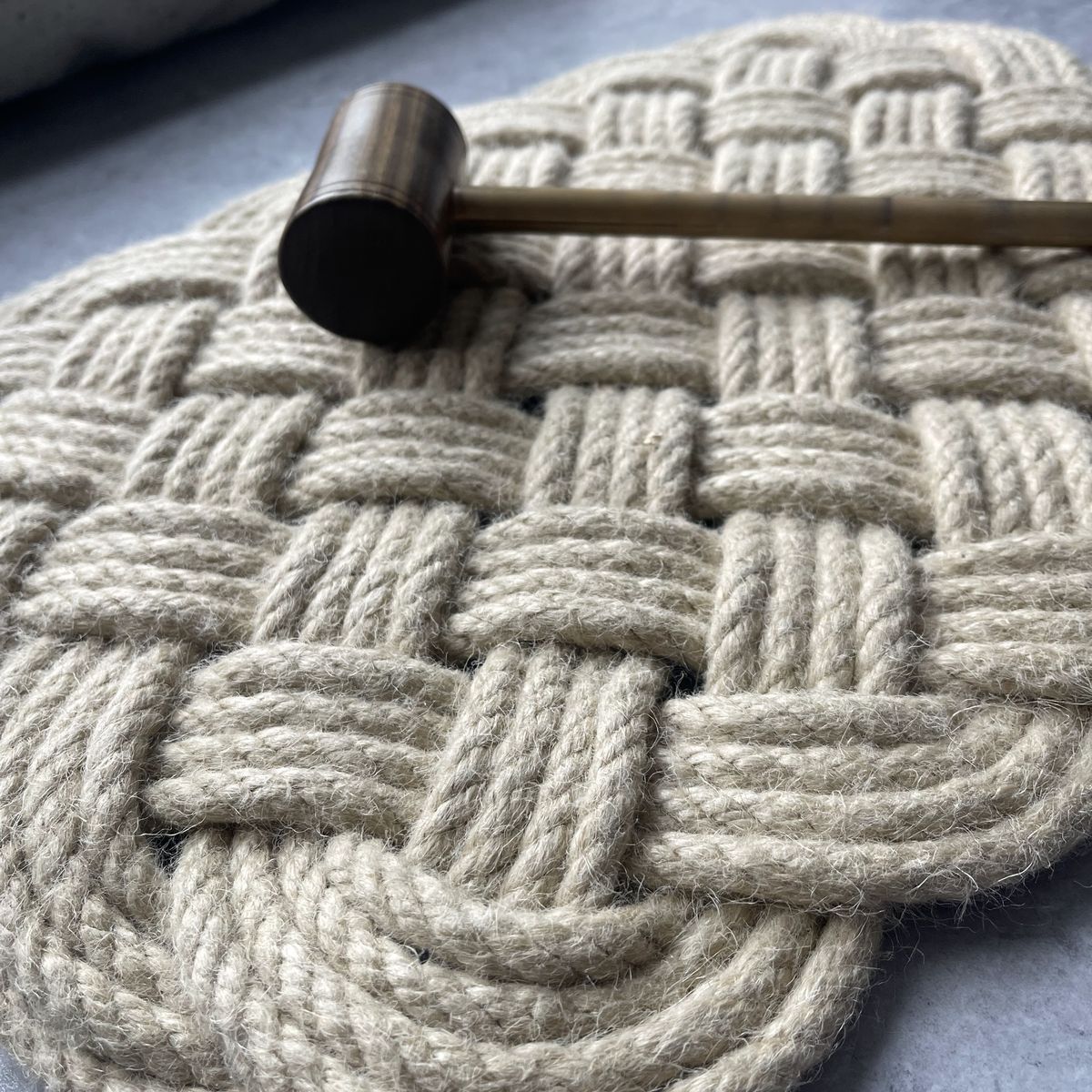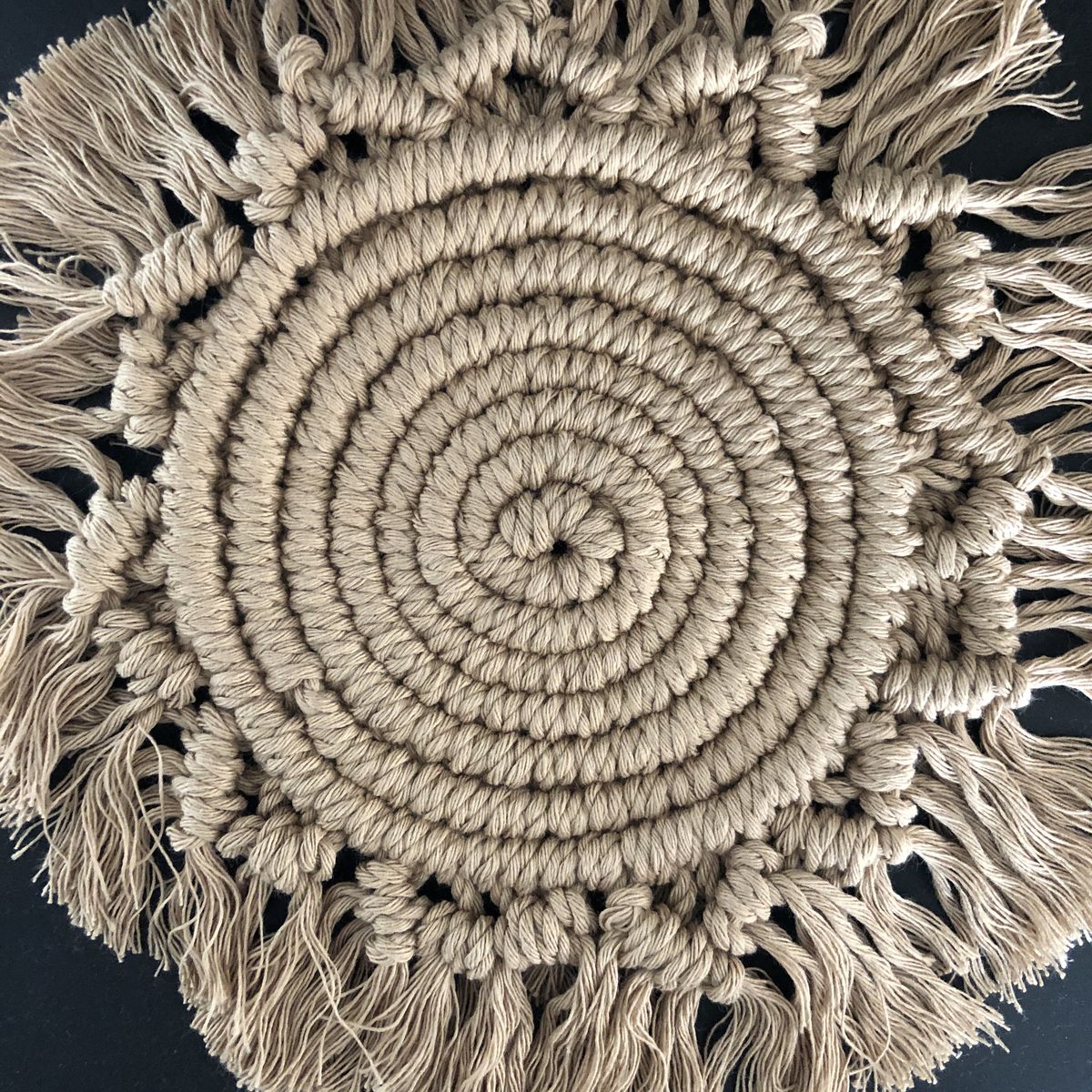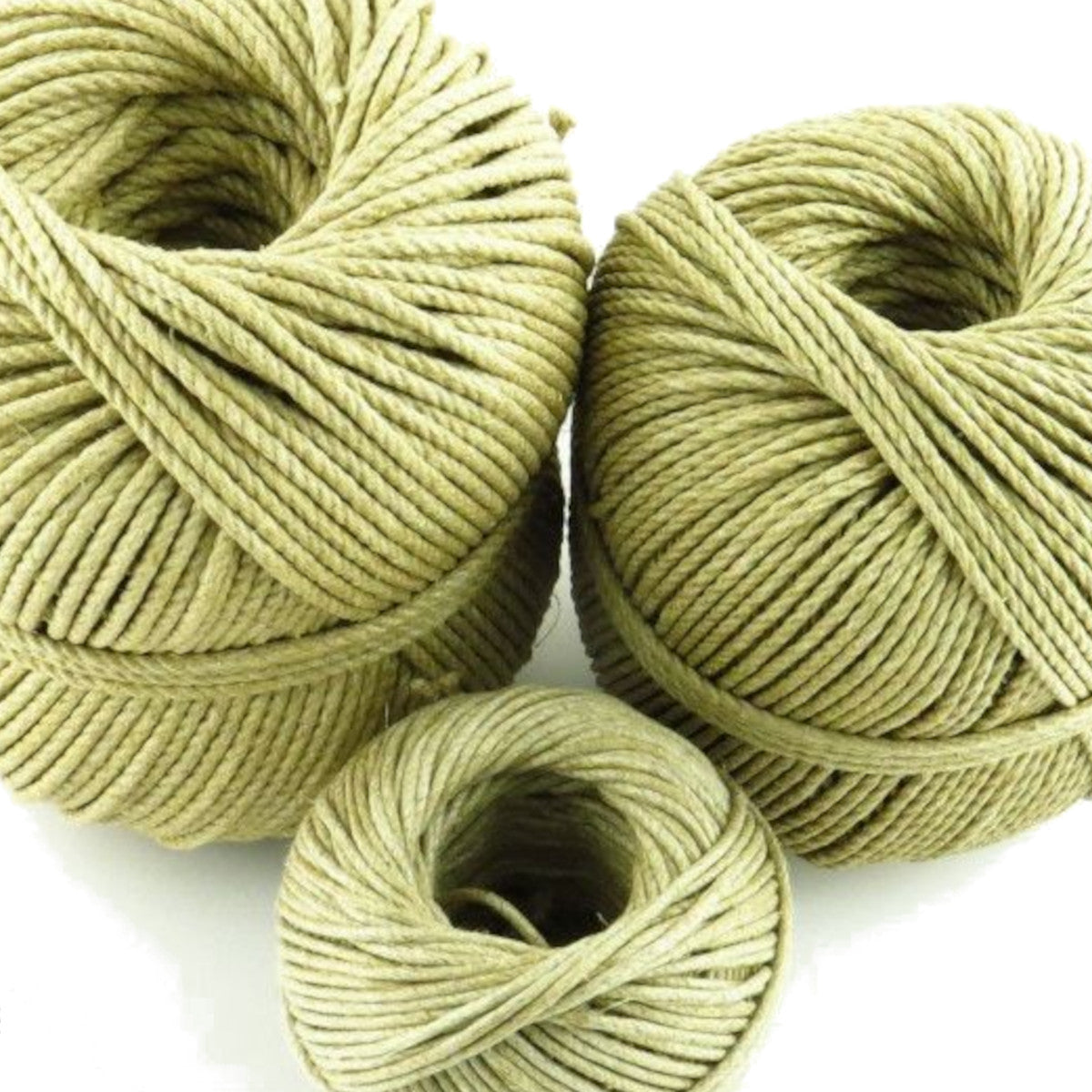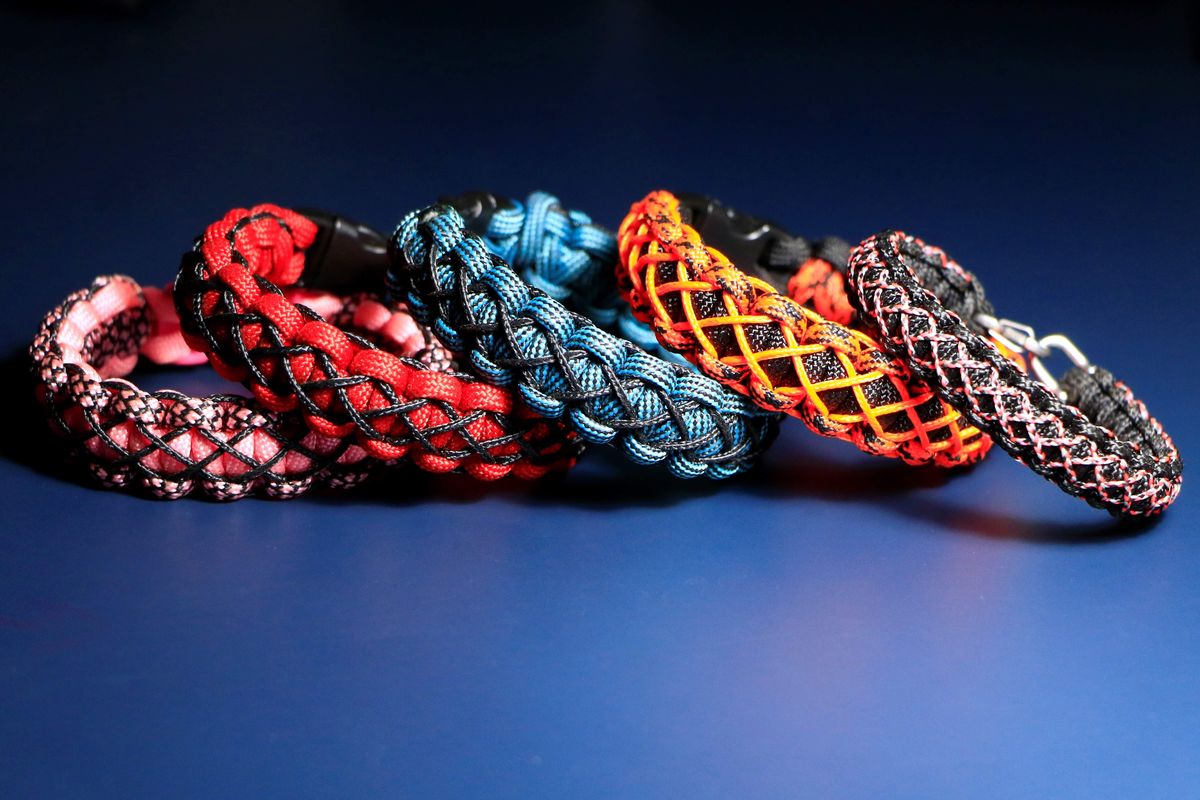Everything you need to know about paracord
Paracord is a lightweight, 100% nylon rope originally used in the suspension lines of American parachutes during World War II. Once on the ground, paratroopers found this rope useful for many other tasks. It is now used as a general purpose cord by both military and civilians. This versatile rope was even used by astronauts on the STS-82 mission to repair the Hubble Space Telescope.
The braided sheath is composed of a large number of threads for its size which gives it a relatively smooth appearance. The best known and most used paracord is the 550 paracord type III which has a diameter of approximately 4mm.
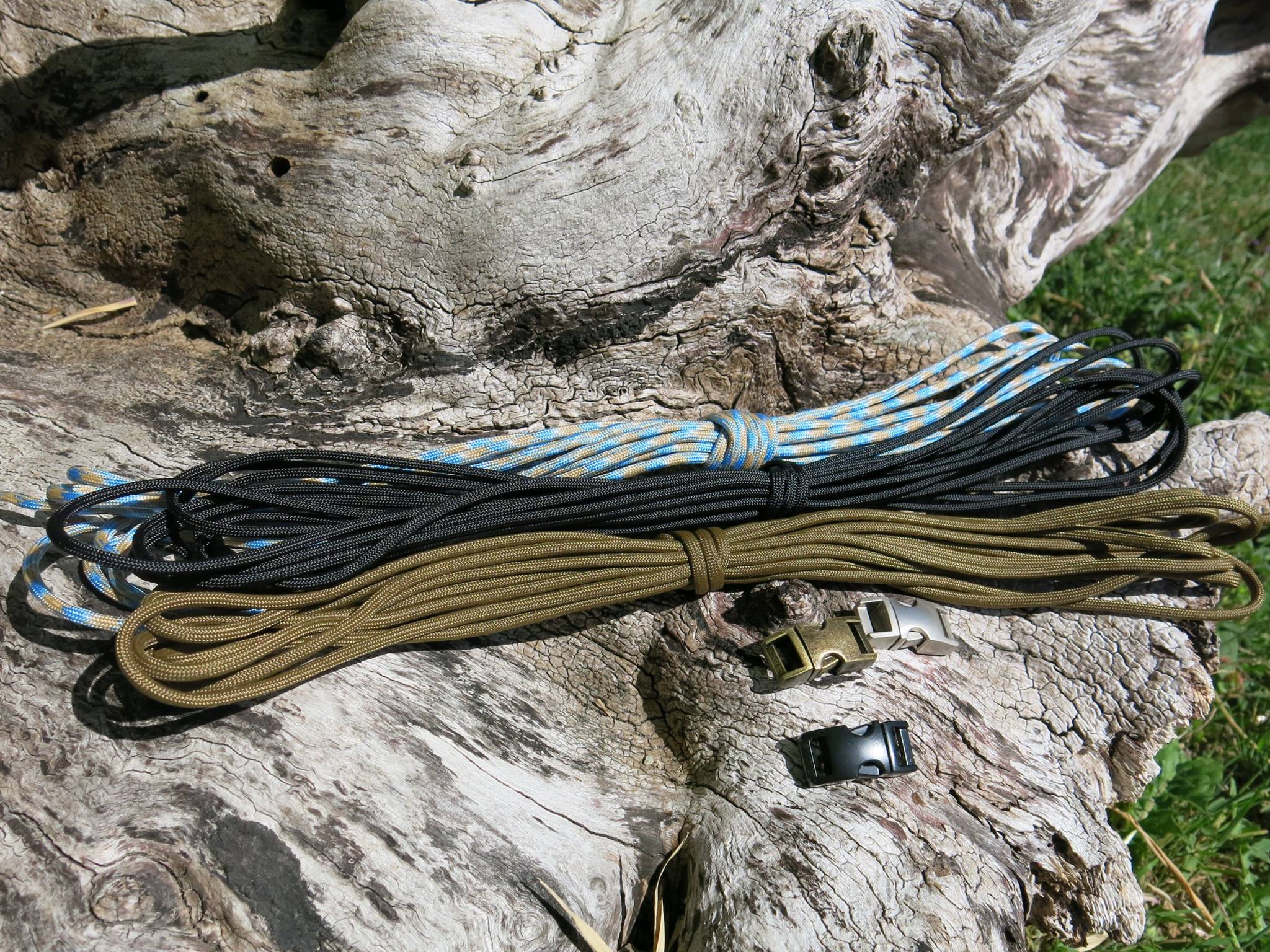
Military use of paracord
Despite paracord's historical association with airborne troops, virtually all U.S. units use this cord. It is used in almost any situation where lightweight cordage is needed. Typical uses include securing equipment, harnesses, camouflage netting in trees or for vehicles, etc.
The inner strands of the core can be removed and also used when the need for a thinner cord arises, for example as fishing line in a survival situation or even as sewing thread.
Nylon sheathing is often used when a thinner or less elastic cord is needed, such as for a shoelace.
The different types of paracord
US military paracord is specific to MIL-C-5040H. US military specifications define 6 types of paracord: I, IA, II, IIA, III, IV. Types IA and IIA are coreless.
The MIL-C-5040H standard outlines a number of parameters that the final product must meet. But while this standard is specific about the yarns that make up the sheath and core of the paracord, there are no final diameter requirements for the rope itself.
Here is a summary table of the specifications:
The core of the paracord consists of zero or more strands, their number is determined by the type of the paracord.
Each inner strand is itself composed of 2 strands twisted together for commercial paracord or 3 strands twisted together for MIL-C-5040H paracord, therefore MIL-C-5040H Type 3 550 paracord is slightly rounder than commercial Type III 550 paracord.
Minimum resistance
Soul of the rope
Rope sheath
100 lb or 45 kg
1 strand
Braided 16 wires
65 lb or 30 kg
Without soul
Braided 16 wires
400 lbs or 181 kg
From 4 to 7 strands
Braided 32 or 36 threads
260 lbs or 118 kg
Without soul
Braided 32 or 36 threads
550 lb or 250 kg
7 to 9 strands
Braided 32 or 36 threads
750 lb or 340 kg
11 strands
Braided 32, 36 or 44 threads
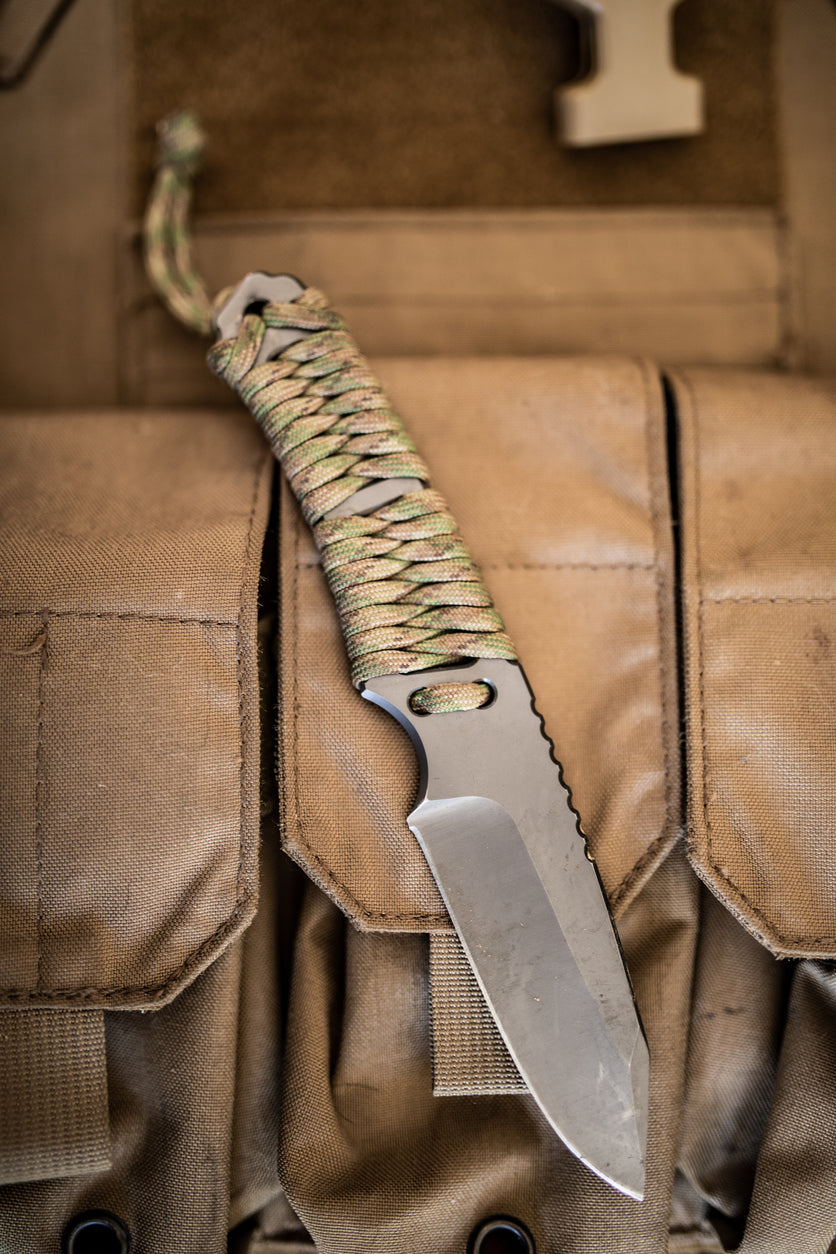
Colors and the MIL-C-5040H standard
MIL-C-5040H Paracord is only manufactured by suppliers approved by the US military and is only available in a very limited number of colors which are: Black, Coyote Brown, Tan, Desert Tan, Foliage Green, Olive Drab, Red, International Orange, Natural & Navy Blue. Commercial paracord is available in an ever-increasing number of colors, colors that can be solid or multi-colored.
Sites claiming to sell MIL-C-5040H paracord in colors other than those listed above are simply false advertising.
The MIL-C-5040H standard requires that:
- The fibres used for the sheath must be coloured using an approved dye, the dye must not compromise the structure of the fibres or the finished product.
- The undyed fibers used to make the core are twisted to make threads with 3 bundles per core thread.
- The sheath is then braided onto the core wires and the cord is steamed to tighten it. This step is crucial for using paracord as parachute lines as it provides extra elasticity to the paracord.
MIL-C-5040H paracord manufacturers are also required to put a marking fiber into the paracord they manufacture. This fiber helps identify the manufacturer of the paracord in case of a problem.
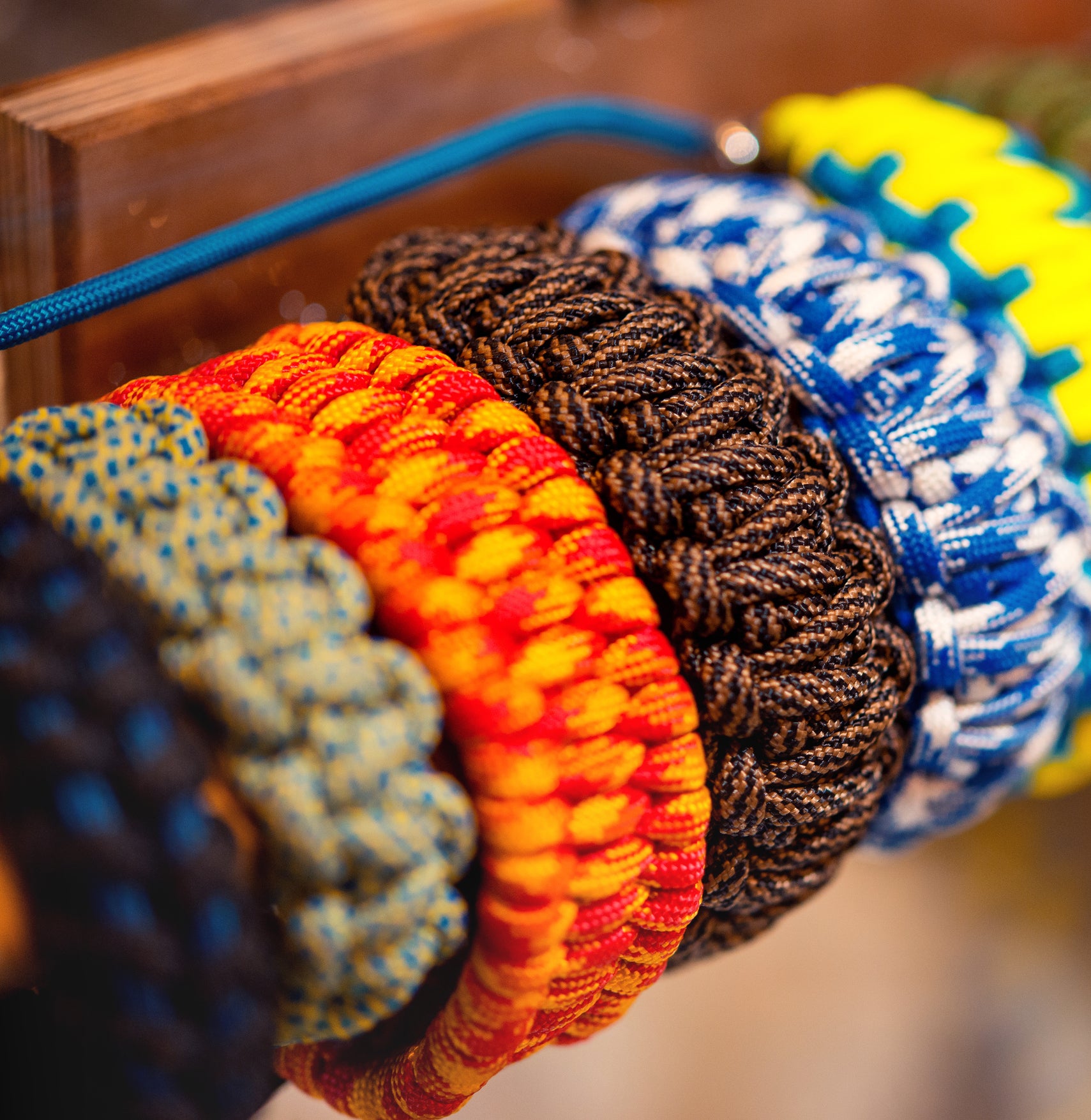
Paracord in the civilian domain
After serving as parachute lines during World War II, paracord became available to civilians, first in military surplus stores, then as a common retail product in various stores in the USA, and finally on the Internet.
Paracord is now widely used for making bracelets, survival bracelets, key rings, wrist straps, knife handles, shoe laces, belts, animal collars or harnesses, etc.
The quality of commercially available paracord varies greatly and many unscrupulous dealers do not hesitate to label their product with the flattering name of paracord even if their "string" is far from having the characteristics, so be careful...

Paracord 100
Type I paracord is significantly smaller than 550 paracord, being about 2mm in diameter compared to about 4mm for 550 paracord.
The braided sheath is made up of 16 wires which gives it a relatively smooth appearance.
The inner strand of the core can be removed and also used when the need for a thinner cord arises.

Paracord 275
Paracord 275 is between Type I and 550 paracord in diameter, being about 2.5mm in diameter compared to about 2mm for Type I paracord and 4mm for 550 paracord.
The braided sheath is made up of 16 wires which gives it a relatively smooth appearance.
Inside the sheath, 4 strands with a strength of about 35 pounds. Each inner strand is itself composed of 2 strands with a strength of about 17.5 pounds each.

Paracord 400
Type II 400 paracord is roughly the same size as 550 paracord, about 4mm in diameter.
The braided sheath is made up of 32 threads as for the 550 paracord, however its core is made up of only 4 strands which can be removed and also used when the need for a thinner cord arises.

Paracord 650
Paracord 650 also called paraline 650 is roughly the same size as paracord 400 type II, it is approximately 4mm in diameter.
The braided sheath is composed of 32 threads as for the paracord 400 or 550, its core is also composed of 4 strands. But these strands are made of "puffy" type nylon, that is to say that they are more voluminous than those found in the paracord, this to make the rope rounder and more flexible.
The slightly rounder and more flexible 650 paracord is therefore also very popular and even preferred by some users.

Paracord 750
Type IV paracord is very slightly thicker than 550 paracord, approximately 4.5mm in diameter.
Composed of 11 inner strands having a resistance of approximately 35 pounds each. Each inner strand is itself composed of 2 strands having a resistance of approximately 17.5 pounds each.

The Nano paracord
The Nano paracord is a 0.75mm diameter rope, so it is the smallest of the ropes we offer.
It is often used to braid inside another braid, this rope does not contain an inner strand.
Its breaking strength is approximately 36 pounds.
Our Nano paracord is made in the USA and sold in spools of 300 feet, or approximately 90 meters.

The Micro paracord
The Micro paracord is a 1.18mm diameter rope, so after the Nano paracord it is the smallest rope we offer.
It is often used for braiding inside another braid and for jewelry making, this rope does not contain an inner strand.
Its breaking strength is about 100 pounds.
Our Micro paracord is made in the USA and sold in 125 foot spools, or approximately 38 meters.


